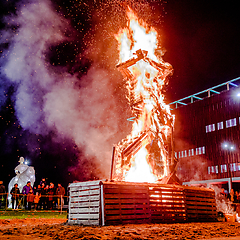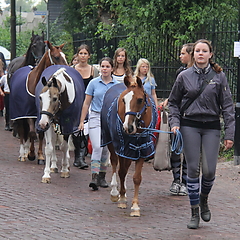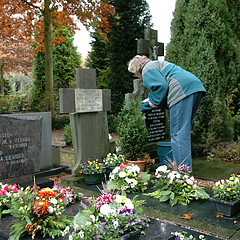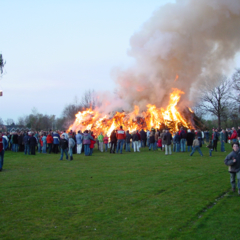Each year, on the second Saturday after Easter, a pine tree is planted in the South Limburgian village of Noorbeek, in honour of Saint Brigid. With lots of ceremony the Jonkheid (unmarried men) of Noorbeek put the large pine tree in front of the chapel of Saint Brigid in Noorbeek. On Easter Monday a lottery determines who may take the old tree away. A parade of some thirty draft horses pull a traditional empty pine tree wagon to fetch the new pine. The pastor and the mayor are the first ones to handle the axe. On the way back to Noorbeek a halt is made at every bar in the hamlets of Schilberg and Hoogcruts and in the village of Noorbeek. In the hamlet of Hoogcruts the horses are once again decorated with roses made of crepe paper and with garlands. Married men take over after arrival at the chapel. They take the tree from the wagon and erect it. Between 11 and 12 PM the work is usually finished and then the feast begins. The whole festivity attracts around eight hundred to a thousand visitors a year.



